PROTECT YOUR DNA WITH QUANTUM TECHNOLOGY
Orgo-Life the new way to the future Advertising by AdpathwayIf you’re looking to improve comfort on your bike, the best suspension seatposts can offer a simple yet highly effective solution.
By absorbing shock and vibration from uneven surfaces, they can make a huge difference in how smooth and enjoyable your rides are, whether you’re on pavement, gravel, or off-road trails.
Suspension seatposts work by providing a degree of vertical movement that helps cushion you from bumps and jolts. This makes it easier to pedal while seated on rough roads, and it helps reduce fatigue, especially on longer rides.
The best part? A quality suspension seatpost can be had for as little as $100, and installation is quick and easy to do yourself.
In this article, we’ll start by exploring the pros and cons of suspension seatposts. You’ll learn about the different types of spring materials and seatpost designs, as well as how to choose the right amount of suspension travel. We’ll then wrap up with a selection of the best suspension seatposts currently available.
Whether you’re commuting, bikepacking, or just trying to reduce fatigue on rough roads, this guide will give you the information you need to make a smart and comfortable choice.
This article was originally published in May 2021 but has been updated in June 2025.
Advantages of Suspension Seatposts
Boost Your Comfort
A suspension seatpost not only absorbs larger impacts but also damps road vibrations. The less strain your body endures while riding, the fresher you’ll feel at the end of the day, or the longer you’ll be able to ride.
Stay Seated Over Rough Terrain
Suspension seatposts make it possible to stay seated and continue pedalling on terrain that would normally force you to stand. Compared to using a rigid post on the same bumpy climb, I often find my legs feel noticeably fresher simply because I’m standing less.
Reduce or Eliminate Back Pain
Many riders with back issues say they couldn’t ride at all without a suspension seatpost. By isolating vibrations and sharp impacts from your body, you significantly reduce strain on your lower back.
Make Narrow Tyre Bikes More Capable
While not a perfect substitute for wider tyres, a suspension seatpost can noticeably increase the off-road capability of bikes with narrower rubber. You’d be surprised just how far you can comfortably push a bike with 38mm tyres.
Consistent Performance For All Riders
The comfort of a standard seatpost depends on both your body weight and how much of the post is exposed from the frame. This is not the case with a suspension seatpost. Since smaller riders tend to weigh less and have shorter exposed posts, they stand to gain the most from a suspension seatpost upgrade.
Comfort Without Full Suspension
Instead of opting for a full-suspension bike purely for comfort, you can add a suspension seatpost to a hardtail or rigid frame. This provides similar comfort benefits without the added weight, cost, or mechanical complexity.
Disadvantages of Suspension Seatposts
Weight Considerations
Suspension seatposts typically add between 100 and 500 grams (4–18 oz) compared to a standard aluminium post. While this is a modest weight increase, it’s worth factoring in if you’re building a lightweight setup.
Suspension Bob
Pedalling can introduce movement (often called “bob”) as your body weight shifts and interacts with the suspension mechanism. The extent of this bob varies depending on the seatpost design and how it’s tuned.
You May Not Need It
Not every rider or bike will benefit from a suspension seatpost. If your bike is full suspension, the rear suspension already isolates your body over rough terrain. In this case, adding a suspension seatpost is usually unnecessary, although it can help in some cases.
Similarly, fat bikes, thanks to their oversized tires, naturally absorb a lot of trail chatter. With tire widths ranging from 4 to 6 inches, they can compress by 30 to 80 mm over rough terrain, providing a level of built-in suspension that reduces the need for a suspension seatpost.
What Suspension Seatposts Aim to Achieve
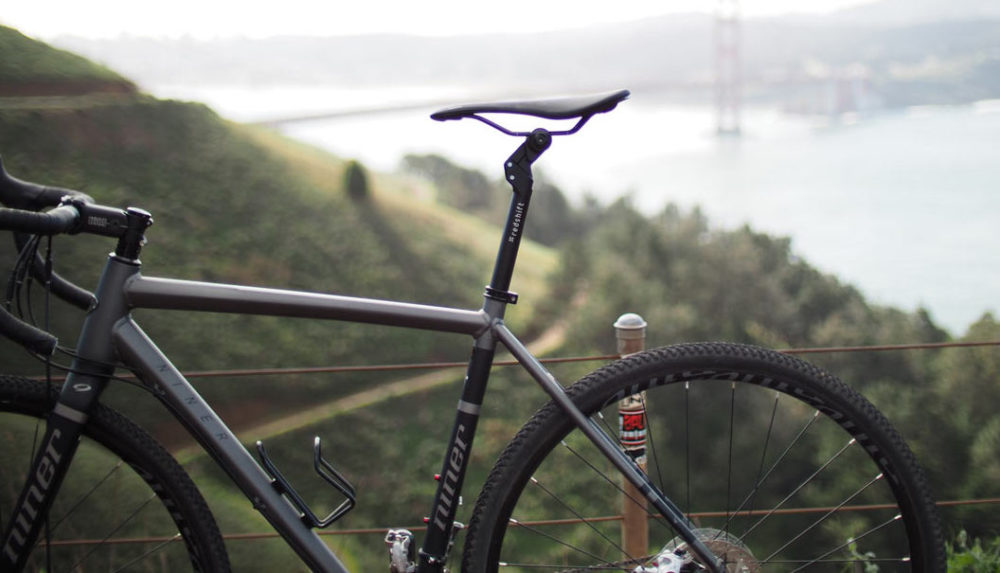 The Redshift Shockstop has an unconventional aesthetic.
The Redshift Shockstop has an unconventional aesthetic.Suspension seatposts are designed to improve comfort in two key ways:
- Increased Vertical Deflection – to absorb bigger hits
- Enhanced Damping – to reduce vibrations from the road
Deflection refers to how much a seatpost moves in response to an impact. More deflection means better absorption of sharp jolts, like hitting a pothole or riding over corrugated dirt roads. This reduces fatigue on your body and helps you stay seated and pedalling through rougher terrain
Damping controls the speed at which the seatpost moves in response to repeated bumps. A well-damped seatpost absorbs vibrations more effectively, insulating you from the high-frequency “buzz” that travels up through the frame from the road or trail.
Suspension Seatpost Spring Types
Suspension seatposts use different types of springs to manage deflection and damping. Each spring type offers unique ride characteristics, making it important to choose the one that best suits your terrain and comfort preferences.
Coil Springs
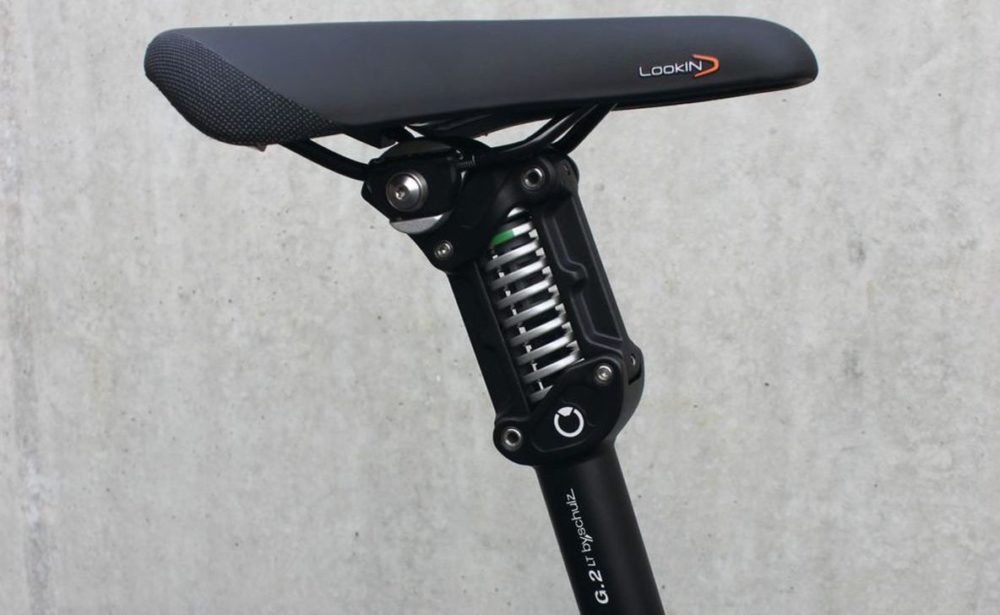 The Byschulz G.2 LT is a coil spring suspension seatpost offering 50mm of travel.
The Byschulz G.2 LT is a coil spring suspension seatpost offering 50mm of travel.Coil-sprung seatposts are best described as lively. They respond quickly and noticeably to bumps, which makes them excellent for off-road riding. Their high reactivity helps soak up uneven terrain, keeping you seated and in control.
However, this responsiveness can come at a cost. When dialled in for rough surfaces, coil springs tend to bob more on smooth roads. You can reduce this by adjusting the spring pre-load, which increases the force required to initiate movement. While this helps minimise bob, it also makes the post less sensitive to smaller bumps.
If you mainly ride smooth pavement, coil spring seatposts might feel too active or “bouncy” for your liking.
Elastomer Springs
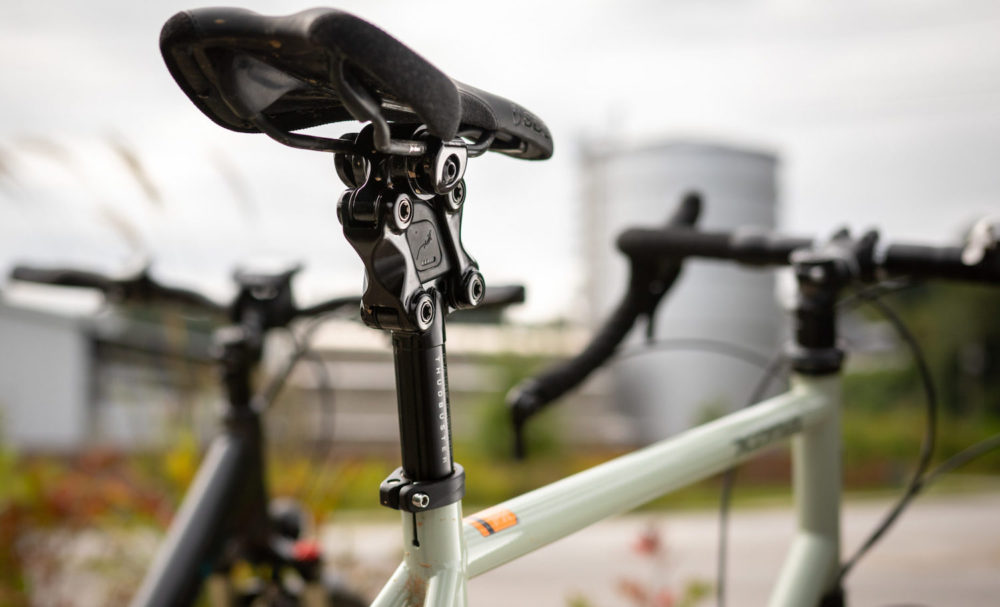 The Cane Creek Thudbuster is an elastomer spring seatpost.
The Cane Creek Thudbuster is an elastomer spring seatpost.Elastomer-sprung seatposts are the quiet achievers. They offer a more subdued and controlled response, thanks to their naturally slower rebound rate. This “muted” feel is particularly well-suited to fast, uneven surfaces like gravel roads, where you want vibration control without excessive movement.
Most people prefer the natural, almost invisible damping feel of an elastomer post. It doesn’t call attention to itself, it just works.
One drawback is that elastomers can become firmer in cold weather, reducing their effectiveness. So if you often ride in sub-zero conditions, they may not be ideal. They can also require a bit of lubrication to prevent squeaks, but this is easily solved with a seatpost cover.
Coil + Elastomer Hybrid Springs
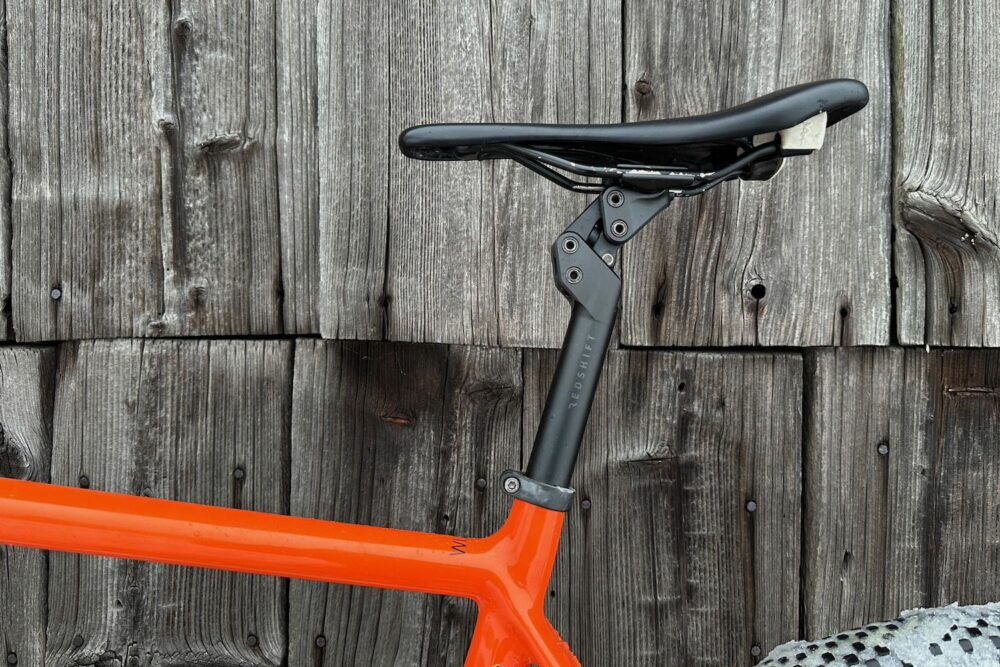
One of the more recent innovations in suspension seatpost technology is the use of hybrid spring systems, combining coil and elastomer elements into a single unit.
This setup is designed to harness the best of both worlds. The coil spring delivers fast, responsive movement over larger hits, while the elastomer helps control rebound and absorb high-frequency vibrations. The result is a seatpost that feels both active and controlled. It’s responsive when you need it, but without the excessive bounce that pure coil systems can produce.
In our testing, across both big impacts and sustained chatter, this hybrid spring design has proven to be the top performer in overall comfort and vibration damping.
Air Springs
 The PNW Coast relies on an air spring.
The PNW Coast relies on an air spring.Air springs are typically found in telescopic suspension seatposts and offer the highest level of adjustability. You can fine-tune the spring rate with great precision, allowing you to match the suspension feel exactly to your weight and riding style.
While less common than coil or elastomer systems, air-sprung seatposts are a great option for riders who want maximum customisation or who plan to tackle a wide variety of terrain.
Suspension Seatpost Designs
Linkage
Linkage-driven seatposts are engineered to move in the same direction as the forces coming up from the rear wheel. This alignment makes them particularly effective at absorbing impacts, as they can better counteract, and sometimes even neutralise, bumps and vibrations before they reach your body.
One of the biggest advantages of this design is that it maintains a consistent saddle-to-pedal distance when compressed. This is important for efficient pedalling, especially on rough terrain where stability and cadence matter.
Telescopic

Telescopic seatposts, on the other hand, compress in a straight downward direction, which doesn’t align perfectly with the angled forces coming from the rear wheel. This makes them less responsive to bumps and can result in a slightly less comfortable ride.
Another drawback is that the saddle-to-pedal distance shortens under compression, which can affect pedalling efficiency on rough surfaces.
That said, telescopic seatposts remain popular for several good reasons: they’re usually lighter, more affordable, visually subtle, and have a lower minimum installation height, making them easier to fit on more bikes.
Vibration Testing Suspension Seatposts

Now, let’s dive into the data to see how different suspension seatpost designs stack up in real-world testing.
As part of the CYCLINGABOUT Comfort Lab, we measured the vibration damping of various suspension seatposts in two scenarios:
- A big hit test, simulating a 30mm obstacle like a tree root or sharp rock
- A high-frequency chatter test, simulating continuous vibrations from a rough gravel road
Coil spring seatposts, particularly those that combine coil and elastomer elements, consistently deliver the best vibration damping in both test scenarios. Compared to a carbon seatpost, they typically reduce vibrations by 15 to 30%.
Leading the pack is the Redshift ShockStop PRO Endurance, which we recorded delivering a 29.8% reduction in the big hit test and a 19.2% reduction in the high-frequency chatter test, both measured against a rigid aluminium seatpost.
The Cane Creek eeSilk, which uses only an elastomer spring, achieved about half as much vibration damping. However, it’s important to keep in mind that it also offers less suspension travel, which partially explains the lower performance.
Finally, the PNW Coast, with its air spring design, showed a modest 6% improvement in vibration damping. It clearly requires a higher threshold of force to activate, which limits its effectiveness over smaller bumps and vibrations.
Choosing The Right Suspension Travel
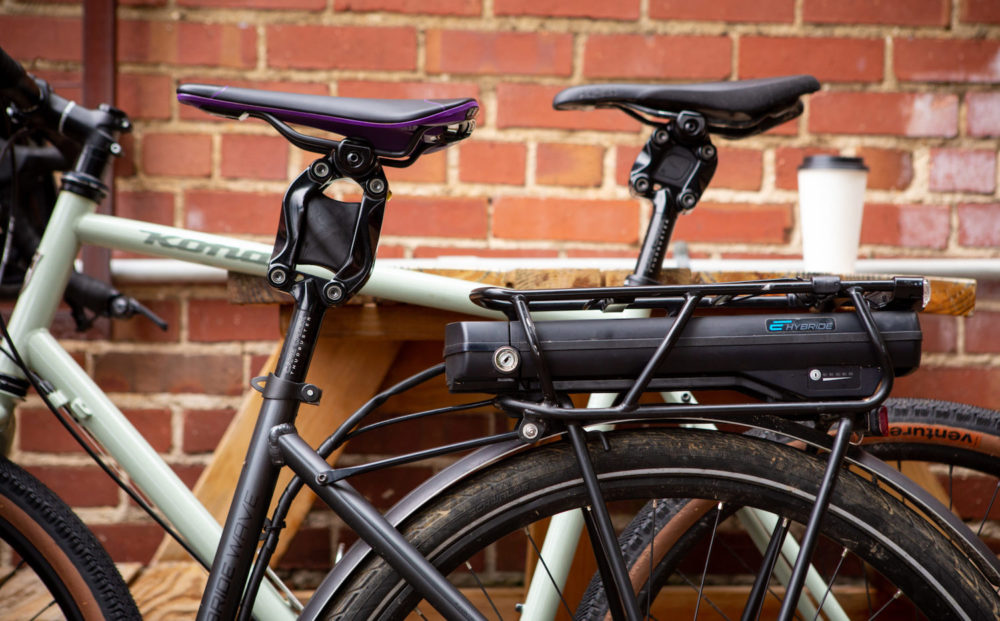 The Cane Creek Thudbuster LT has 90mm of vertical travel.
The Cane Creek Thudbuster LT has 90mm of vertical travel.Suspension seatposts come with a range of travel options, typically between 20mm and 90mm. Choosing the right amount of travel ensures you get the most out of your seatpost, without adding unnecessary weight or suspension movement.
So, how much travel do you need?
1. Match Travel to Terrain
The rougher the surface, the more travel you’ll benefit from. As shown in our tests, riding on rugged or uneven terrain produces greater impact forces from the rear wheel. More suspension travel allows the seatpost to absorb and damp those forces more effectively.
- If you’re riding at higher speeds, especially on an eBike, or frequently encounter potholes, roots, or corrugations, a post with 35 to 90mm will provide better comfort and control.
- For most rough gravel or dirt roads, around 35mm of travel is usually sufficient.
2. Consider Your Riding Position
Your body position also plays a key role in selecting travel length:
- Those with a more aggressive or sporty position, where more weight is on the hands, can usually get away with shorter travel (20 to 35 mm), as the saddle takes on less of the impact load.
- Riders with a more upright posture (e.g. trekking, commuting, or touring cyclists) tend to place more weight on the saddle, which makes longer travel posts (35 to 50 mm) more effective and comfortable.
Best Suspension Seatposts: Coil Springs
Redshift ShockStop
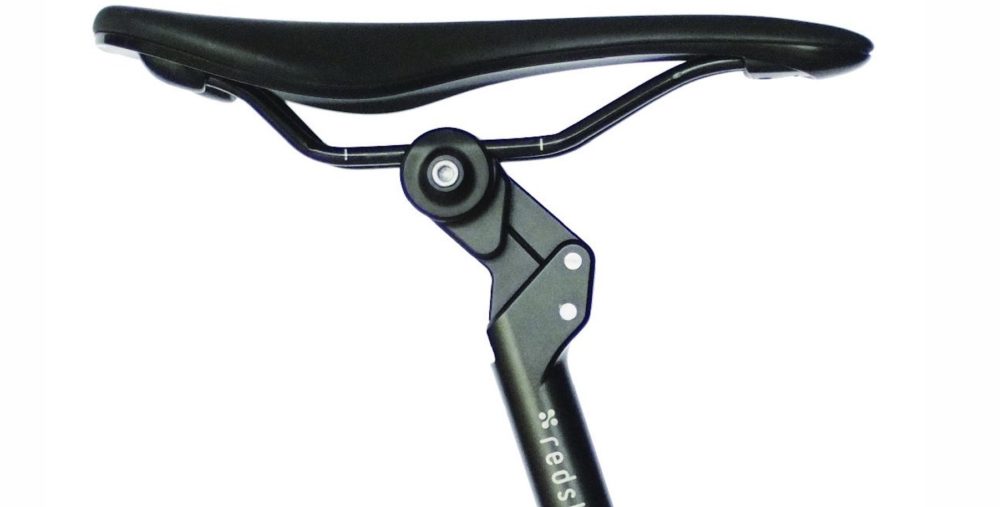
There are four different Redshift ShockStop suspension seatposts available, each offering varying levels of travel, spring configurations, and ride characteristics.
The PRO models both use a hybrid spring system that combines coil and elastomer springs. This design provides a responsive yet well-controlled ride feel and performs best in our vibration lab tests.
The PRO Endurance, with 35mm of travel, is easily the best suspension seatpost I’ve tested to date. It strikes a near-perfect balance, absorbing off-road impacts with confidence while keeping bob to a minimum on smoother roads. A key feature is its preload adjuster, which allows you to fine-tune the firmness of the initial stroke based on your body weight and terrain. This adjustability makes it especially versatile across a range of riding conditions.
If you’re after a firmer, more race-tuned experience, the PRO Race version might be a better fit. It offers 20mm of travel and supports either a coil-plus-elastomer configuration or a dual-elastomer setup. The result is a tauter feel with minimal movement, ideal for smoother roads or riders who prioritise pedalling efficiency over maximum comfort.
If you’re looking to spend less, the standard ShockStop Endurance and ShockStop City models are excellent alternatives. Both offer 35mm of travel using a dual coil spring system. While these posts are highly effective at smoothing out rough roads, they do tend to produce more saddle bob, which may not appeal to all riders, particularly those focused on efficiency.
The difference between the ShockStop Endurance and ShockStop City posts lies in compatibility. The Endurance model is available in a broader range of diameters and lengths, making it suitable for more bikes.
Buy the PRO Endurance for $279 on Amazon – 27.2 mm only (shims available)
Buy the PRO Race for $299 on Amazon – 27.2 mm only (shims available)
Buy the Endurance for $229 on Amazon – 27.2, 30.4, 30.9 or 31.6 mm
Buy the City for $179 on Amazon – 30.9 or 31.6 mm
Kinekt XR
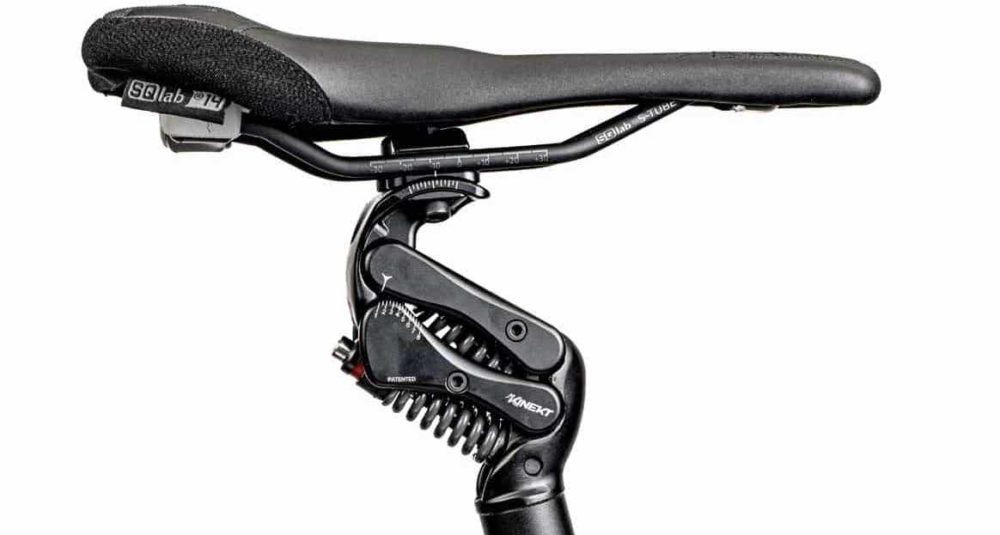
The Kinekt XR suspension seatpost stands out as one of the most responsive and active options available, delivering up to 35mm of tunable travel. Designed with versatility in mind, it uses a linkage-driven design and offers five different spring rates to accommodate a wide range of rider weights, from as light as 36kg (80lb) to as heavy as 145kg (320lb). This makes it one of the most inclusive options in terms of rider compatibility.
What sets the Kinekt XR apart is its high initial sensitivity, meaning it begins compressing with minimal input. This responsiveness translates to excellent small-bump compliance, soaking up vibrations and chatter from rough trails or broken surfaces with ease. However, the same characteristic can make the post feel overly active under smooth, consistent pedalling efforts.
To address this, Kinekt includes a tool-free preload adjustment dial, conveniently located at the rear of the post. With a simple turn, riders can quickly increase the preload to firm up the ride and reduce unwanted movement, tailoring the suspension feel in real-time for changing terrain.
While it’s best suited to rougher, more uneven surfaces where its active nature can truly shine, the preload dial adds a level of adaptability that makes the Kinekt XR viable for more mixed-surface riding too.
Buy the Kinekt XR for $269 on Amazon – 27.2 or 31.6 mm
Buy the Kinekt XR Carbon for $349 on Amazon – 27.2mm
Suntour NCX
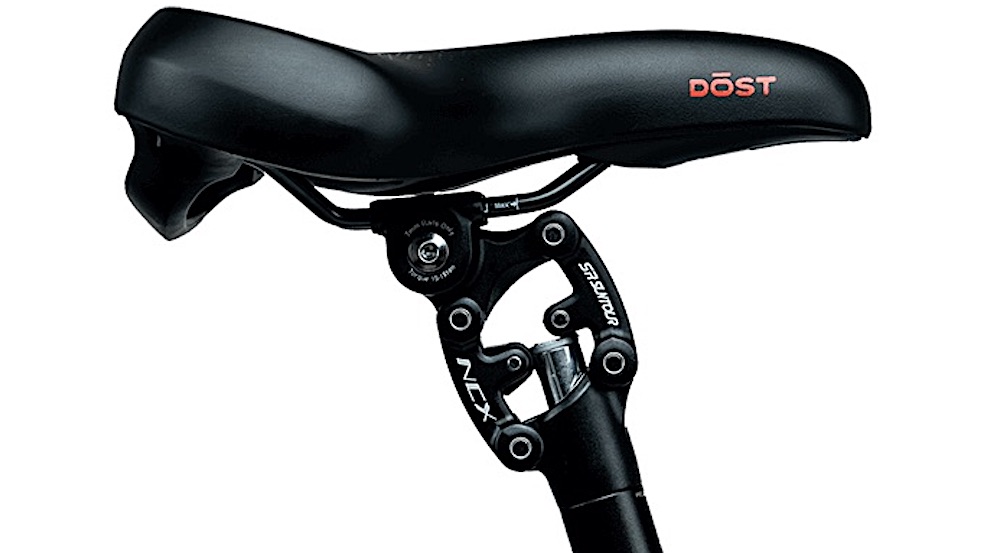
The Suntour NCX is widely regarded as the go-to budget suspension seatpost, offering impressive performance at a very accessible price point, typically around US $100. For the money, it’s a fantastic value, delivering a noticeable improvement in comfort over rigid posts.
That said, there are a few compromises that come with the low price. The NCX is relatively heavy, tipping the scales at around 800 grams, which makes it one of the heaviest options in this category.
It also comes pre-fitted with a single spring rate, which may not suit all riders out of the box. However, Suntour offers alternative springs for just $15, allowing you to fine-tune the post for your weight and riding style without much extra cost.
The post is rated for riders up to 120kg (265lb), making it suitable for most cyclists, though heavier riders will want to ensure they have the appropriate spring installed for optimal support and performance.
Buy the Suntour NCX for $103 on Amazon – 27.2 or 31.6 mm
Buy the Suntour NCX for $102 on Amazon – 30.9mm
Best Suspension Seatposts: Elastomer
Cane Creek Thudbuster ST
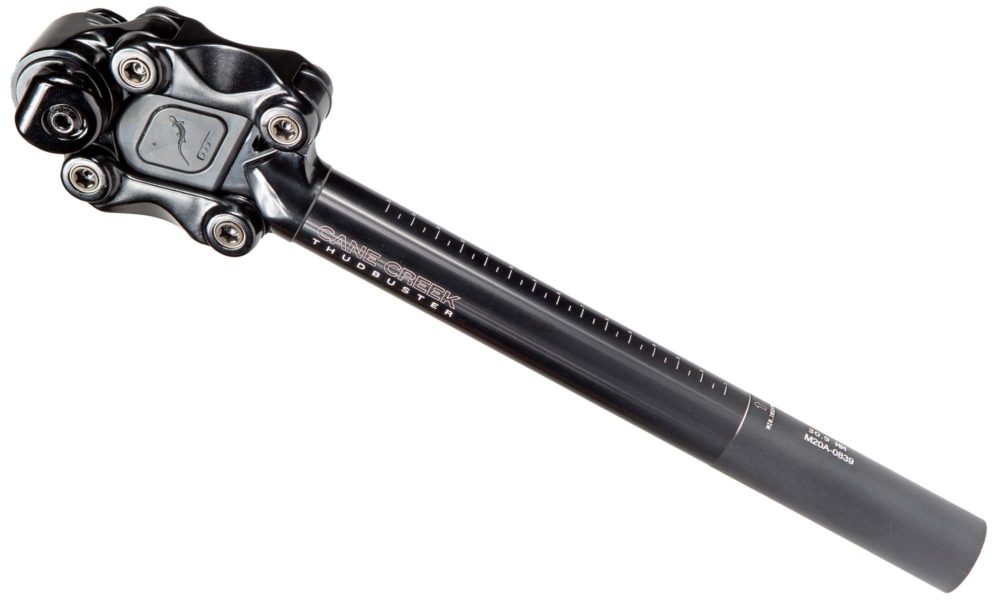
Having spent several years riding the Cane Creek Thudbuster ST, I can confidently say it’s an excellent choice for riders who spend a significant portion of their time on smoother surfaces.
One of its standout characteristics is its slower rebound speed, which gives it a more muted, controlled feel, minimising any sensation of suspension bob during steady pedalling. This makes it particularly well-suited to pavement, gravel paths, and hardpack trails, where overactive seatposts can sometimes feel intrusive.
Despite its road-friendly manners, the Thudbuster still offers a generous 50mm of travel, which is more than enough to take the sting out of rougher off-road terrain. The travel is delivered through a linkage-driven system with a swappable elastomer spring.
Cane Creek offers four elastomer spring rates to match a wide range of rider weights, with support for individuals up to 150kg (330lb). This level of customisation helps ensure the post performs consistently for different riders and riding conditions.
Buy the Cane Creek Thudbuster for $167 on Amazon – 27.2, 30.9 or 31.6 mm
Cane Creek eeSilk Plus

If your rides are mostly on tarmac, bike paths, or well-maintained gravel, the Cane Creek eeSilk+ is one of the best options available for subtle comfort.
Designed with road and endurance riders in mind, it delivers a more muted and controlled suspension feel that closely replicates the vertical compliance of a premium carbon seatpost, but with the added advantage of true adjustability.
The eeSilk+ features five swappable elastomers, each offering a different spring rate to match a wide range of rider weights and preferences. This makes it easy to fine-tune the post to your specific needs, ensuring just the right amount of give without feeling overly soft or unresponsive.
At 373 grams, the Cane Creek eeSilk+ is significantly lighter than most suspension seatposts, helping to keep your bike efficient. While its 35mm of travel won’t absorb big trail hits like a coil-sprung post, it’s more than capable of smoothing out harsh road surfaces, such as pavement cracks, expansion joints, and chip seal, all without any noticeable bounce during steady pedalling.
Buy the Cane Creek eeSilk Plus for $209 on Amazon – 27.2 or 31.6 mm
Best Suspension Seatposts: Dropper
PNW Coast Dropper Post
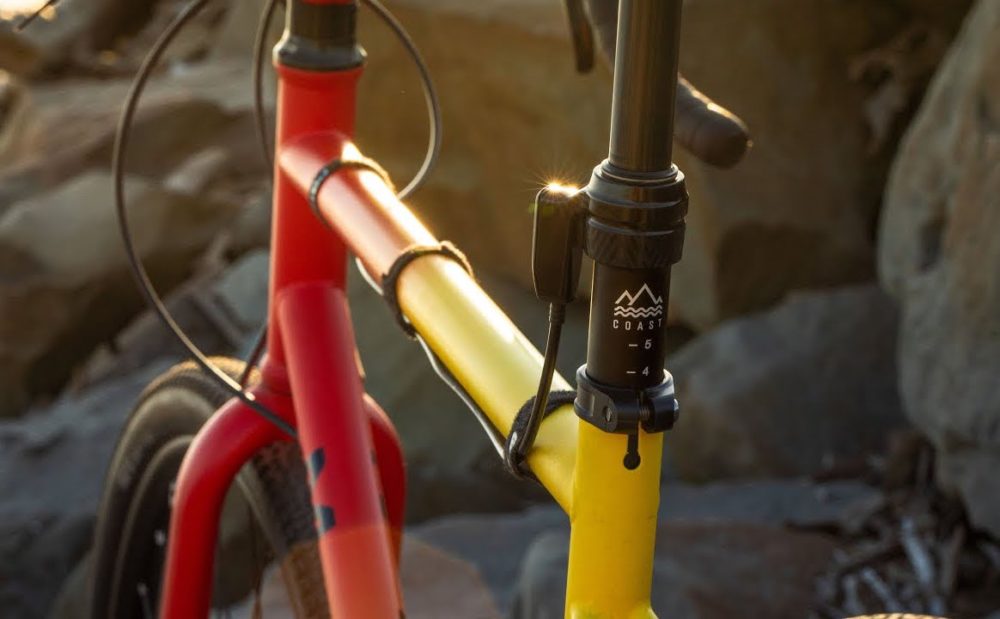
Traditional dropper seatposts offer excellent on-the-fly saddle height adjustment, but they typically provide minimal vertical compliance, largely due to their rigid, telescoping design. That makes them less ideal for riders who are also seeking vibration damping or impact absorption over rough terrain.
Enter the PNW Coast Suspension Dropper, a unique solution that combines the functionality of a dropper post with the added benefit of 40mm of suspension travel. It’s currently the best-value option in this niche category, delivering genuine comfort gains without sacrificing the utility of a dropper mechanism.
Unlike coil or elastomer-based suspension posts, the Coast uses an air-spring system, which makes it notably less active, a trait that some riders will appreciate, particularly those concerned about suspension bob or overly plush ride feel.
While it won’t absorb fine vibrations to the same degree as more active suspension posts, it still does an effective job of smoothing out larger impacts, making it a great fit for gravel roads, light trail use, and urban riding.
Buy the PNW Coast for $202 on Amazon – 27.2, 30.9 or 31.6 mm
Summary

A suspension seatpost is one of the most effective upgrades you can make to improve comfort on long rides. By absorbing larger impacts and damping road vibrations, it reduces the strain on your body, helping you stay fresher and less fatigued over time, especially on rough surfaces.
For slower-paced, off-road riding, nothing beats the performance of a coil spring seatpost, particularly those that incorporate an elastomer for added vibration damping. These posts are incredibly active and responsive, making it far easier to stay seated through rough patches, bumpy terrain, or washboard gravel. The extra compliance allows you to conserve energy on terrain that would otherwise force you out of the saddle.
Krzysztof and I both use and recommend the Redshift ShockStop PRO Endurance, which strikes an excellent balance between off-road performance and on-road efficiency.
If your riding includes a good mix of smoother roads or hardpack surfaces, or if you’re particularly sensitive to suspension bob, you’ll likely prefer a post that relies on an elastomer spring. These tend to feel firmer and more controlled under steady pedalling, providing just enough give to take the edge off without feeling bouncy or overly soft.
Regardless of which design you choose, any quality suspension seatpost will offer a noticeable improvement in comfort over a rigid alloy or carbon post. Once you’ve experienced the difference, it’s hard to go back.
Enjoy the ride, and your new level of comfort!



 1 month ago
7
1 month ago
7
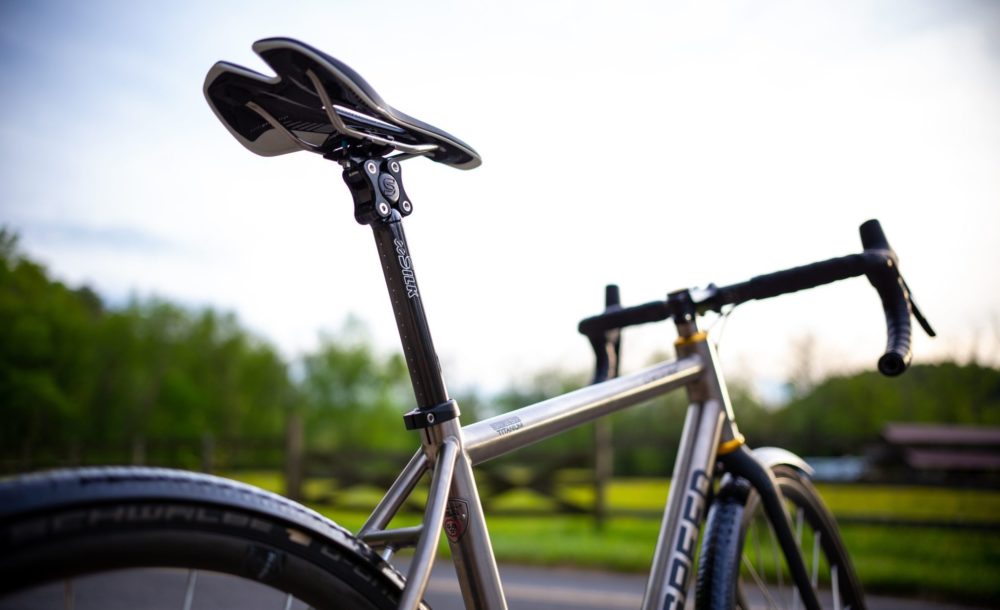
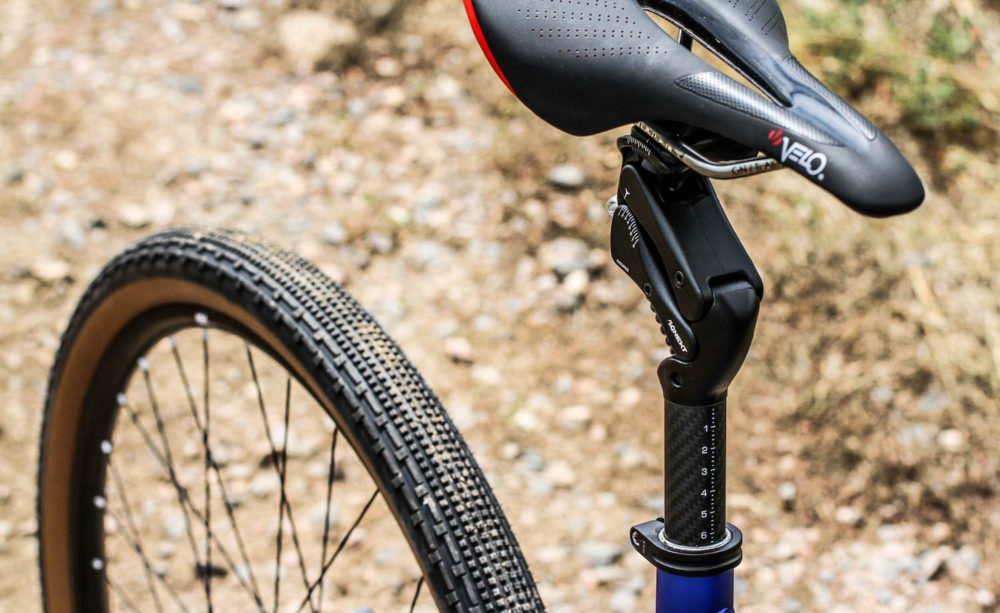
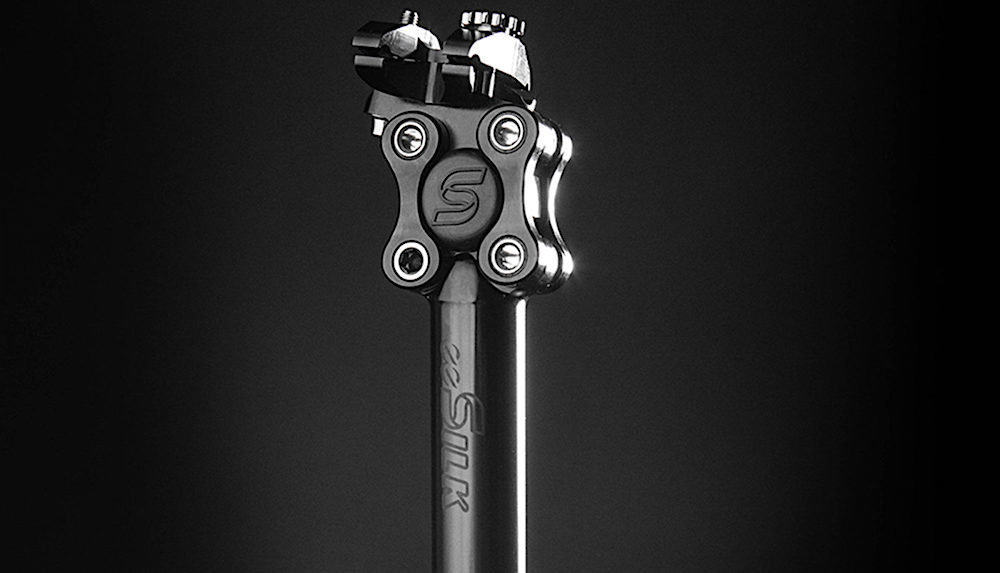
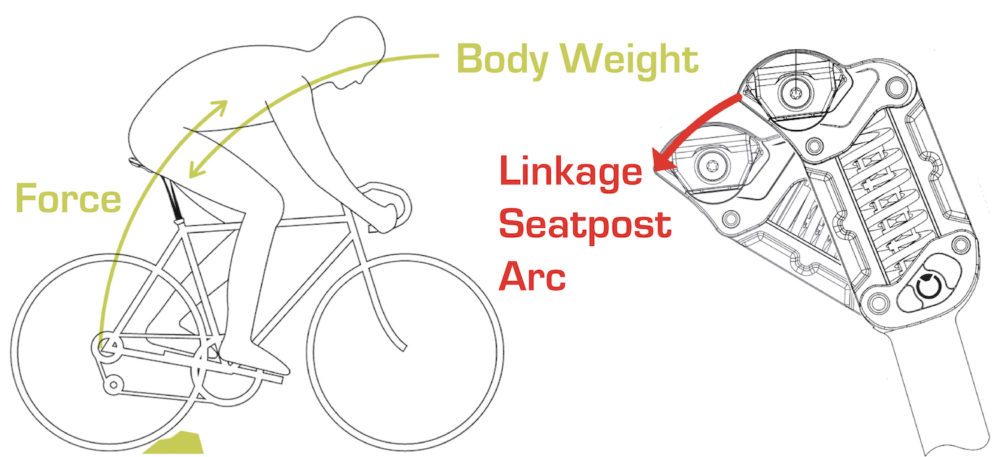

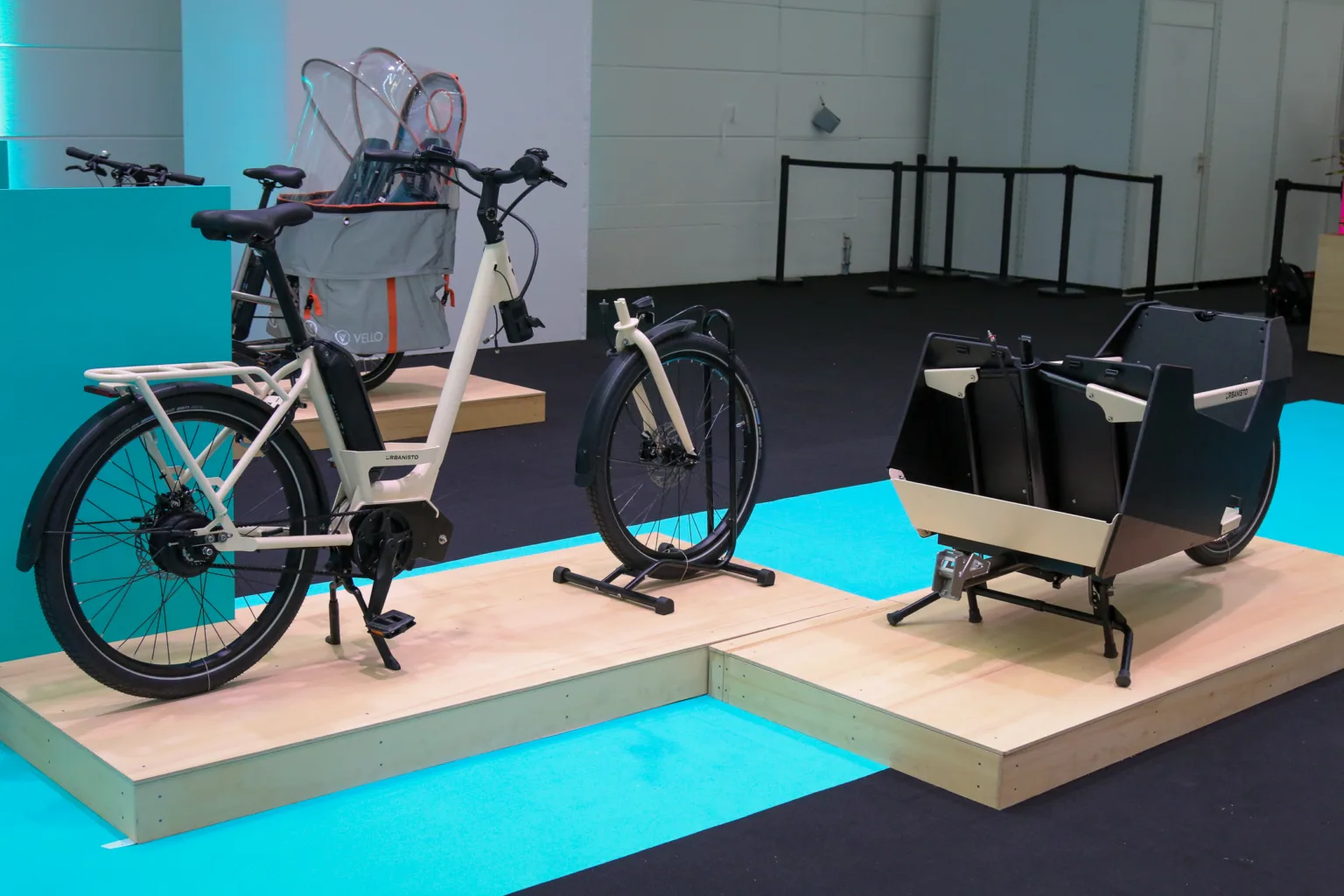

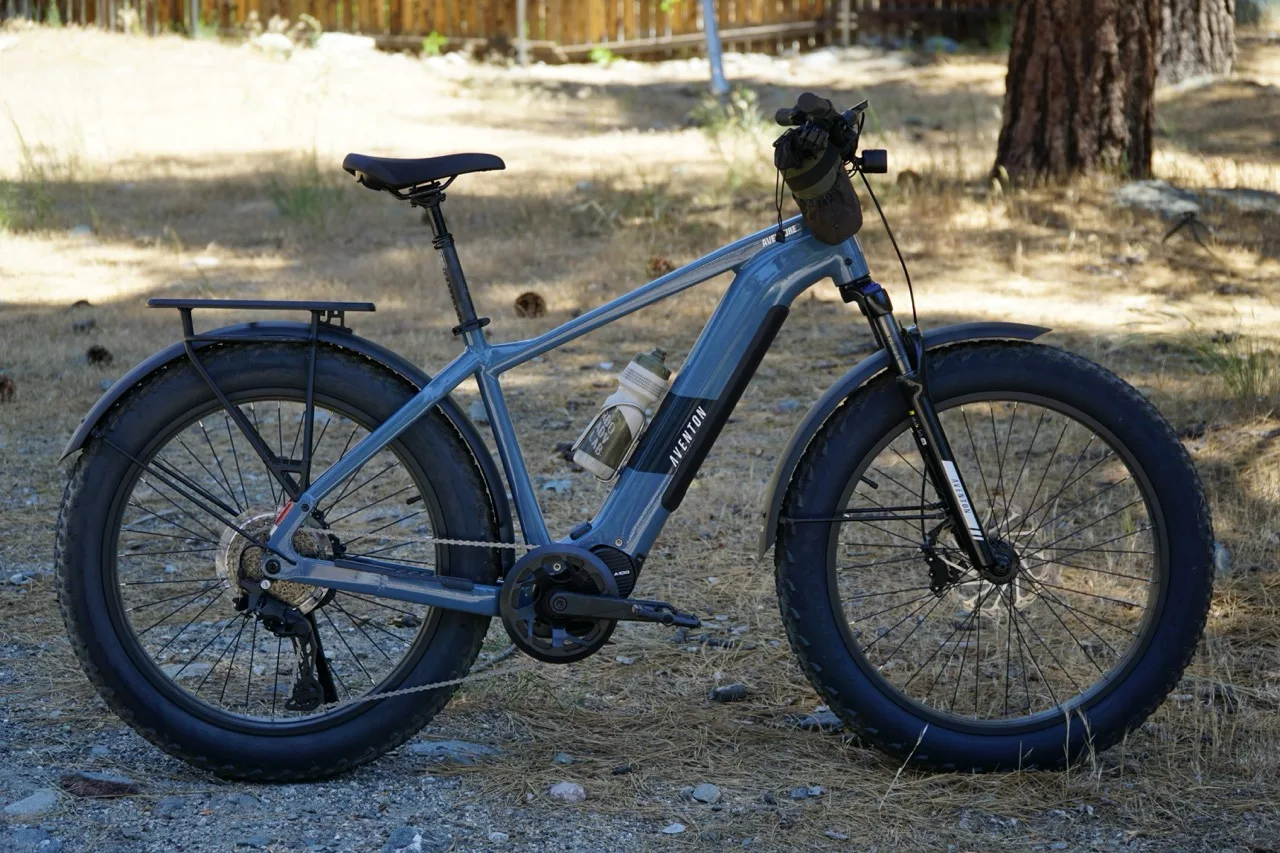
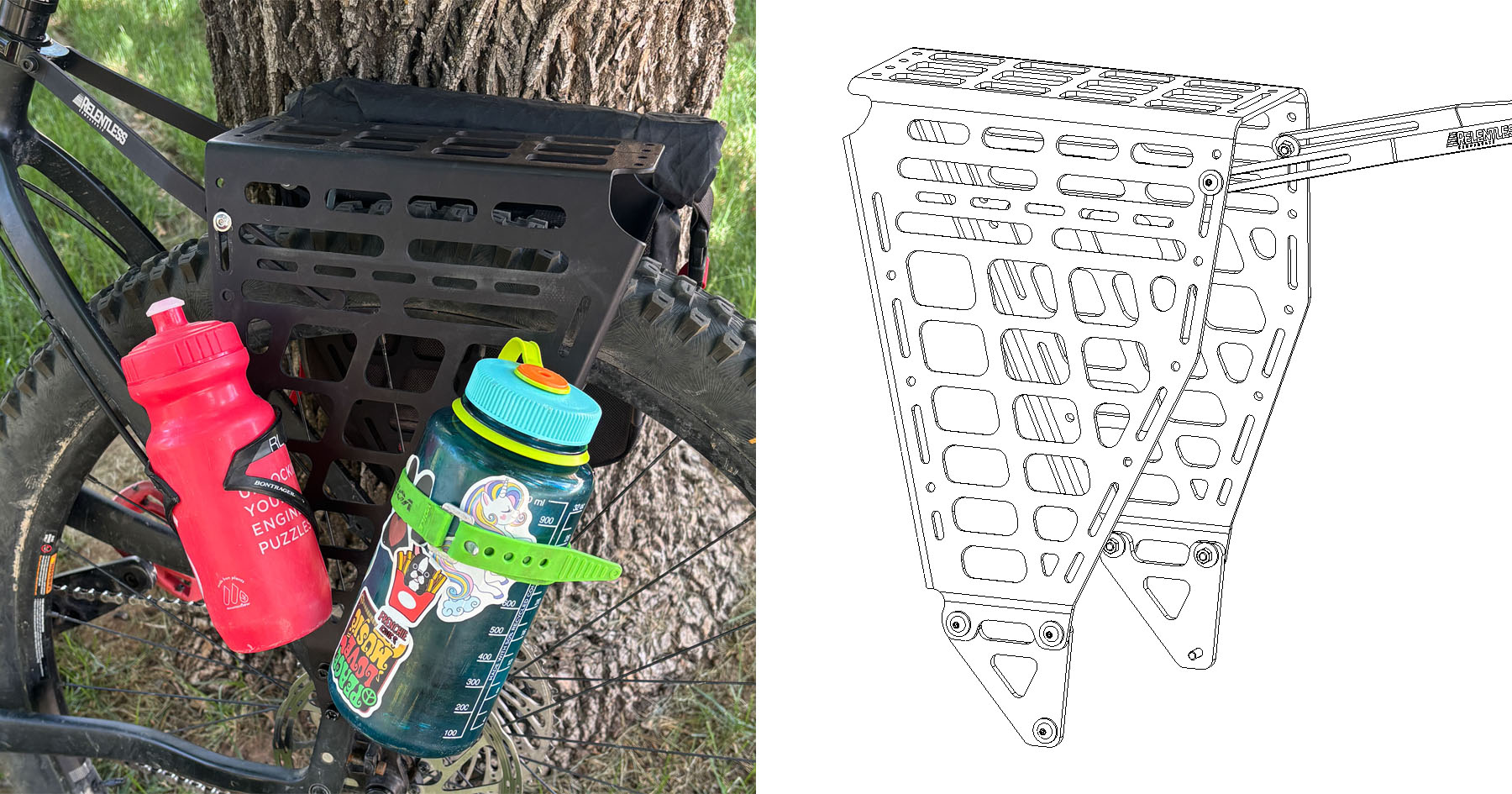
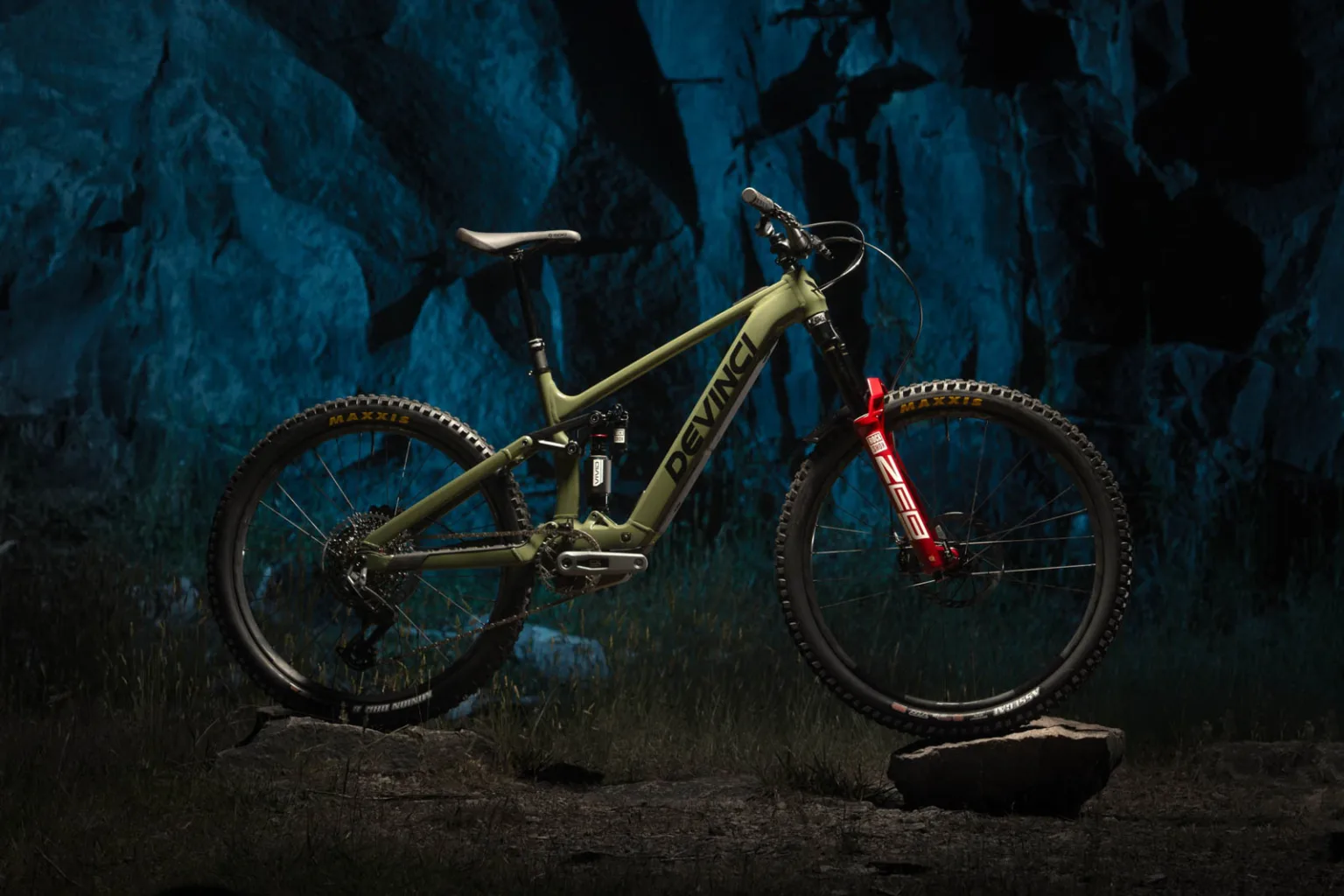




 English (US) ·
English (US) ·  French (CA) ·
French (CA) ·  French (FR) ·
French (FR) ·